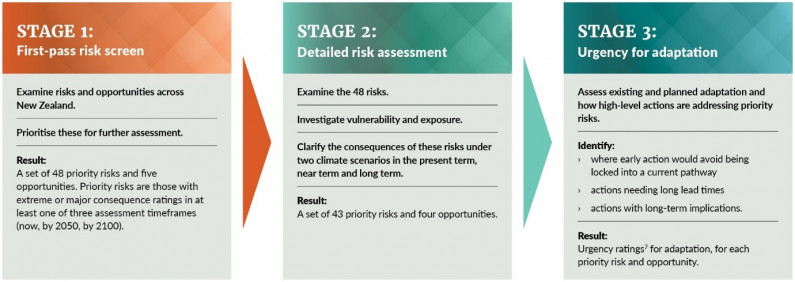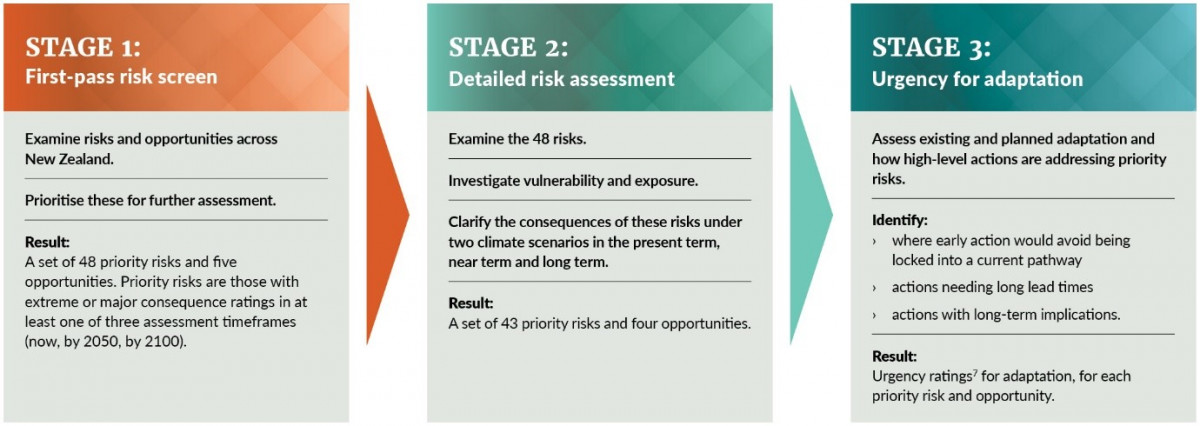First national climate change risk assessment for New Zealand
This first national climate change risk assessment helped the Government identify where it needed to prioritise action. It was an important step towards making New Zealand more resilient.
This first national climate change risk assessment helped the Government identify where it needed to prioritise action. It was an important step towards making New Zealand more resilient.
The risk assessment:
The risk assessment was carried out over nine months by a diverse, multi-disciplinary team led by AECOM, together with Tonkin and Taylor, the National Institute of Water and Atmospheric Research (NIWA) and others.
It was carried out in three stages.


Examine risks and opportunities across New Zealand.
Prioritise these for further assessment.
Result: A set of 48 priority risks and five opportunities. Priority risks are those with extreme or major consequence ratings in at least one of three assessment timeframes (now, by 2050, by 2100).
Examine the 48 risks.
Investigate vulnerability and exposure.
Clarify the consequences of these risks under two climate scenarios in the present term, near term and long term.
Result: A set of 43 priority risks and four opportunities.
Assess existing and planned adaptation and how high-level actions are addressing priority risks.
Identify:
Result: Urgency ratings for adaptation, for each priority risk and opportunity.
More than 400 people were involved. They were from local government, central government, the private sector, primary sector, financial sector, iwi/Māori and universities/research institutes.
The risk assessment used a framework, developed by a panel of experts. The framework provided the methodology for the risk assessment.
The risk assessment method report details how the framework was applied to the risk assessment.